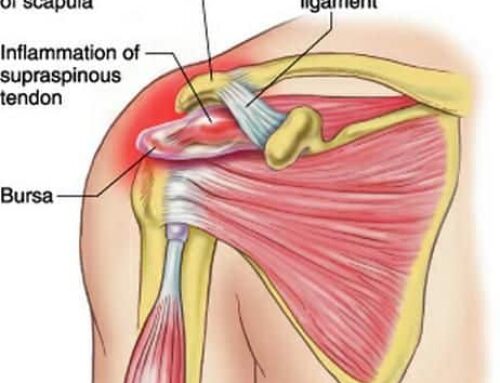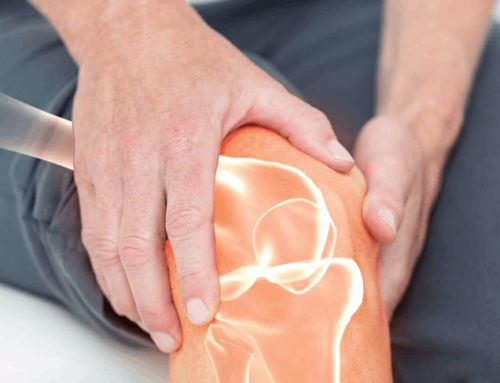Less than half of people who’ve been diagnosed with migraines were diagnosed correctly according to WebMD. In fact, the most common kind of headache is a tension headache. Which makes you wonder, “Have my headaches been misdiagnosed?” When you’re looking at migraines vs. headaches, there are some important things to know.
Treating tension headaches like migraines not only isn’t effective, it can also mask the beginnings of a musculoskeletal issue. This means a serious problem in your neck masquerading as a migraine could be left to cause more and more damage. In reality, tension headaches can be easily fixed for the long term without painkillers or surgery.
In fact, the most common kind of headache is a tension headache. Which makes you wonder, “Have my headaches been misdiagnosed?”
What Are Tension Headaches?
Tension headaches are caused by musculoskeletal issues in your neck. That’s right, the home of your spinal cord and brainstem–not an area you want to do damage to. Oftentimes, problems in your neck (that could be caused by tightness and imbalances in your neck and shoulders) won’t cause neck pain. Instead your neck “refers” the pain into your head. Referred pain is pain your brain registers as coming from a different place than where the problem is.
What Do Tension Headaches Feel Like?
Tension headaches are caused by tightness in the suboccipital muscle group, which overlaps the greater occipital nerve (technical terms for the muscle group that connects the base of your skull to your neck, and nerves in your head). When this nerve is pinched by those muscles, it creates a headache that goes up around the back of the skull and perhaps into the temple and/or behind the eye. These headaches can occur on one side or on both sides simultaneously.
Why Do Migraines Happen?
Unlike tension headaches, the cause of migraines is less understood and harder to treat. The cause of migraines are thought to be related to genetics and environmental factors. People who suffer from migraines might notice that some environmental triggers may precede an attack. Things like drinking too much alcohol or caffeine, flashes of bright light, and eating certain foods like aged cheeses are a few. Changes in physical exertion or eating patterns, stress levels, and hormones in women may also be connected.
Treating Migraines Vs. Headaches
When it comes to treating migraines vs. headaches, it’s important to find out what kind of headache you actually have since the causes of each are so different, and different causes require completely different solutions. What works for an actual migraine, like migraine medication, doesn’t always work for tension headaches, and definitely doesn’t provide long-term relief–something that’s possible if you suffer from tension headaches.
Why You Shouldn’t Rely on Painkillers: Migraines Vs. Headaches
One of the biggest differences in treatment for migraines vs. headaches is the use of painkillers. If you have tension headaches, relying on painkillers is just going to put a Band-Aid on the problem. Migraine medication doesn’t always work for tension headaches. It might sometimes and not other times, which is really confusing for people because they get diagnosed with migraines when they’re in their 30s. The great majority of the time this is actually a misdiagnosis. Real migraines start when you’re in your youth. They don’t just arise randomly as an adult. It’s possible, but it’s very, very uncommon.
It’s actually one of the more over-diagnosed issues that people have: tension headaches being misclassified as migraines. People who are sensitive to light or sound are commonly misdiagnosed as having migraines when they really have a pounding tension headache. Painkillers might stop the pain (maybe), but unless you want to be on those for the rest of your life, it’s not a good solution. Because there is a real, fixable cause. But the solution isn’t to treat the headache like a migraine.
Botox for Migraines: Can Botox Help Headaches?
Getting Botox injections in the back of your head gets recommended a lot for migraines, which is shocking to me. The way a migraine occurs isn’t muscular in nature… and that’s what Botox is made to address. It doesn’t make sense for someone who’s classified as having migraines to be recommended for this kind of treatment. If Botox helps your headaches, you have tension headaches. But that doesn’t mean it’s the right solutions. This is where a lot of people are stuck in this cycle of incorrect and mis-matched advice being given.
How Botox Works and Why It’s Bad for Headaches
The treatment for migraines vs. headaches is the same in one respect: Botox is not the answer. Botox works by paralyzing muscles, and when that muscle gets paralyzed, it can’t contract. So it stops putting pressure on the nerves. When you’ve got that situation for a long time, where you just keep injecting something with Botox, that muscle actually gets weaker and weaker. When your body detects weakness and instability, it responds by tightening muscles as much as it can.
With Botox, you can get caught in this perpetual cycle of constantly injecting to relieve the pressure in the muscles in the back of the head. And the muscles in your neck and head just keep responding by getting tighter. The neck then, gets more unstable because the muscles getting tighter to stabilize the head aren’t meant to do that job. So despite the extra effort they’re putting in, they’re not particularly good at it. So again, not a good long term solution. In fact, Botox is counterproductive when it comes to relieving headaches long term.
What Causes Tension Headaches? Finding The Root Cause
People often think that tension headaches are something that can only be resolved with medication or constant massage. In fact, they’re often caused by poor movement patterns, which are very fixable.
A movement pattern is a set of instructions your brain sends to your body when you want to move (like turning your head or shrugging your shoulders) that dictate which muscles are used and in what order. Your body usually adopts bad movement patterns as a protective measure to add stability to the area after injury. However, sometimes even after the injury has healed, your brain may continue sending bad movement patterns. This means that your brain is using the wrong muscles to make movement, putting undue stress on some muscles and underusing (and thus weakening) the muscles that are supposed to be working.
Fixing the movement pattern (the root cause of your tension headaches), instead of masking the pain with painkillers (like a Bandaid), means finding long-term relief and not having to rely on painkillers to get back to your life.
How To Get Rid of Tension Headaches
A number of different muscles in your neck and shoulders can cause tension headaches. To identify which muscles are the victims of poor movement patterns and what exactly your faulty movement pattern is, a doctor of physical therapy who specializes in movement patterns will be able diagnose the issue and design a treatment plan. Through specific exercise sequences, your doctor can retrain your brain to send the right instructions to the right muscles. When this happens, the muscles that have been taking on the extra work to cover for the muscles that have been slacking will be able to relax, releasing the nerve that’s been being pinched.
The Takeaway
At the end of the day, the most common kind of headache is often incorrectly diagnosed as a migraine. But solutions for migraine headaches aren’t effective solutions for tension headaches. When it comes to migraines vs. headaches, tension headaches are often caused by poor posture habits, bad movement patterns, and weaknesses in the neck and shoulders that cause muscle tightness. These now tight, overworked muscles then pinch nerves that don’t want to be pinched. Migraines are more likely linked to genetics and the environment. The key to relieving tension headaches is twofold:
- Relax the improperly overworked muscles in your neck and shoulders by applying pressure and breathing deeply, and
- strengthen the muscles that should be doing the work and let those stiff muscles that have been carrying the team on their own have a break!
If you’re concerned that you’ve been misdiagnosed, a specialized physical therapist will be able to help. Specialists can reprogram your body to use correct movement patterns. Call The Doctors of Physical Therapy at 480-482-0651







